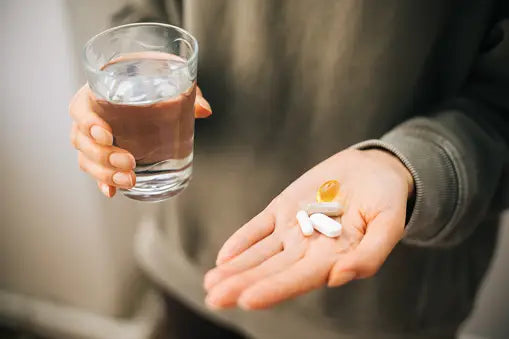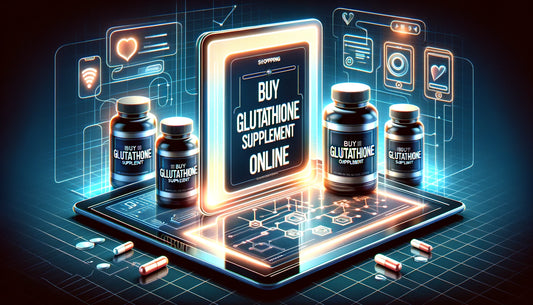

Welcome to Shredville
Table of Contents
Welcome to Shredville: Synephrine
by: Robbie Durand
With the gap that ephedrine left in the weight loss market years ago, Synephrine HCL has taken up ephedrine’s space as a popular weight loss supplement after ephedrine was named a banned substance in the United States. Synephrine has many of the same benefits as ephedrine, but without the addictive properties and negative side effects. Synephrine is a compound found in high concentrations in the fruit Citrus Aurantium (aka bitter orange), which is the only source strong enough to cause the fat-burning and stimulatory effects. It exists in many citrus fruits, but at levels that would not have any impact on humans.
Synephrine is also known to increase the body’s metabolic rate. It helps release the stored lipid cells into the bloodstream, and the metabolism, which is working at a faster rate than usual so it can burn off this stored energy. This creates a loss of fat in the body. It also has the benefit of being able to do so without majorly increasing blood pressure or heart rate. Similar to caffeine, synephrine is a stimulant. It provides an energy boost, can help suppress your appetite, and help you burn more calories even when exercise is not being undertaken. Many who take synephrine combined with caffeine find this gives them the results they are after.

Synephrine is structurally similar to adrenaline, noradrenaline, and ephedrine; several studies have confirmed the metabolic effects of synephrine that are useful for bodybuilders such as: Enhancing thermogenesis and fat burning, increasing energy metabolism, increasing athletic performance. Synephrine is widely used in combination with caffeine and other ingredients in products designed to support weight management.
A previous study reported that 20mg of synephrine with 325 mg of caffeine increased energy expenditure in humans. Previous research has shown beneficial effects of synephrine on raising metabolic rate. Interestingly, based on receptor binding studies, synephrine exhibits little binding affinity for β‐1 and β‐2, which are located in both heart and skeletal muscle as well as α‐ adrenoreceptors.
Several studies have shown that synephrine may act primarily as a β‐3 adrenergic receptor agonist, which is located in brown adipose tissue resulting in increased thermogenesis and lipolysis. Synephrine is a phenylethylamine derivative with some structural similarities to ephedrine, however a recent review of the literature concluded that synephrine and bitter orange extract based on the available studies in animals, humans and cell culture systems, it has been concluded that when taken orally and in recommended amounts both are safe. None of the previous research reviews have reported serious or significant adverse events that are directly related to bitter orange extract or synephrine.
A typical sweet orange contains about 6mg synephrine. A wide variety of Citrus juices contain approximately 5mg synephrine per 8-ounce glass. Another positive aspect of using synephrine was that in a study in rats, synephrine does dependently decreased appetite in rats, which can help bodybuilders curve, their appetite while dieting. Most sport supplements and fat-burners/weight loss aids will take care of the stacking aspect for the end user. Caffeine’s effects are synergistic with it and will nearly always be found alongside synephrine, whether in pure anhydrous form or from an alternative source such as green tea extract.
Stohs SJ, Preuss HG, Shara M. A review of the human clinical studies involving Citrus aurantium (bitter orange) extract and its primary protoalkaloid p-synephrine. Int J Med Sci. 2012;9(7):527-38. Epub 2012 Aug 29. Review.
Kaats GR, Miller H, Preuss HG, Stohs SJ. A 60day double-blind, placebo-controlled safety study involving Citrus aurantium (bitter orange) extract. Food Chem Toxicol. 2013 May;55:358-62.
Hong NY, Cui ZG, Kang HK, Lee DH, Lee YK, Park DB. p-Synephrine stimulatesglucose consumption via AMPK in L6 skeletal muscle cells. Biochem Biophys Res Commun. 2012 Feb 24;418(4):720-4.
Sale, C., Harris RC, Delves S, et al. Metabolic and physiological effects of ingesting extracts of bitter orange, green tea and guarana at rest and during treadmill walking in overweight males. Int J Obesity, 2006; 30: 764-773.
Stohs SJ, Shara M. A review of the safety and efficacy of Citrus aurantium in weight management. In: Bagchi D and Preuss H, eds. Obesity: Epidemiology, Pathophysiology and Prevention. Boca Raton, FL: CRC Press. 2007: 371-382.
Haaz S, Fontaine KR, Cutter G, Limdi N, et al. Citrus aurantium and synephrine alkaloids in the treatment of overweight and obesity: an update. Obesity Rev. 2006; 7: 79-88.
Haller CA, Benowitz NL, Peyton J III. Hemodynamic effects of ephedra-free weight-loss supplements in humans. Amer J Med. 2005; 118: 998-1003.
Stohs SJ, Preuss HG. The safety of bitter orange (Citrus au-rantium) and p-synephrine. HerbalGram 2011; 89: 34-39.
Stohs SJ, Preuss HG, Keith SC, Keith PL, Miller H, Kaats GR. Effects of p-synephrine alone and in combination with selected bioflavonoids on resting metabolism, blood pressure, heart rate and self-reported mood changes. Int J Med Sci. 2011 Apr 28;8(4):295-301.
Hoffman et al., 2009 J.R. Hoffman, J. Kang, N.A. Ratamess, S.L. Rashti, C.P. Tranchina and A.D. Faigenbaum, Thermogenic effect of an acute ingestion of a weight loss supplement, J. Int. Soc. Sports Nutr. 6 (2009), pp. 1–6, 2009.
Calapai et al., 1999 G. Calapai, F. Firenzuoli, A. Saitta, F. Squadrito, M.R. Arlotta, G. Constantino and G. Inferrera, Antiobesity and cardiovascular toxic effects of Citrus aurantium extracts in the rat: a preliminary report, Fitoterapia 70 (1999), pp. 586–592, 1999.
Arch JR. 2002. β‐3‐Adrenoreceptor agonists: potential, pitfalls and progress. Eur J Pharmacol 440: 99–107.
Tsujita T, Takaku T. 2007. Lipolysis induced by segment wall extract from Satsuma mandarin orange (Citrus unshu Mark). J Nutr Sci Vitaminol 53: 547–551.
Mattoli L, Cangi F, Maidecchi A, Ghiara C, Stubaro M, Tralda P. 2005. A rapid liquid electrospray ionization mass spectroscopy method for evaluation Citrus aurantium L samples. J Agric Food Chem 53: 9860–9866.
Blumenthal M. 2004. Bitter orange peel and synephrine. Part 1. Whole Foods March: 77–79, 97.

















